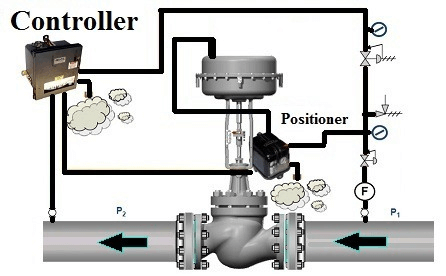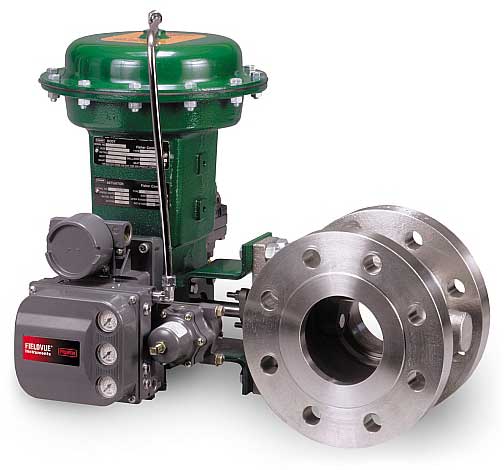Maximizing System Control with High-Performance Control Valves
Maximizing System Control with High-Performance Control Valves
Blog Article

Maximize Power Cost Savings and Convenience With Advanced Building Automation Controls
In the world of contemporary design and center monitoring, the assimilation of sophisticated building automation manages stands as an essential advancement. By taking advantage of the power of automation, buildings can adjust, respond, and evolve in methods that were when unthinkable.
Power Effectiveness Conveniences
Power performance advantages can dramatically minimize power intake and operational expenses in structures. By carrying out energy-efficient techniques and innovations, structure proprietors and drivers can accomplish considerable financial savings while likewise adding to ecological sustainability. One of the primary advantages of improving energy performance in structures is the reduction of utility costs. Energy-efficient systems, such as innovative building automation controls, can enhance using resources like cooling, illumination, and heating, resulting in lower power expenses in time.
Moreover, boosted energy effectiveness can extend the life-span of structure tools and systems. By running extra successfully, HVAC systems, light, and other building elements experience much less damage, causing decreased upkeep and replacement expenses. Furthermore, energy-efficient structures frequently regulate higher home values and rental rates, providing lasting financial advantages to owners.
Additionally, energy effectiveness can boost passenger comfort and performance. Effectively regulated interior atmospheres with optimum lighting and thermal problems produce a more enjoyable and conducive workspace, resulting in improved staff member contentment and efficiency. In general, the energy effectiveness benefits related to advanced structure automation controls are multifaceted, including price financial savings, ecological stewardship, and passenger health.
Boosted Convenience Control
Enhancing convenience control in building settings requires a sophisticated combination of advanced automation systems for ideal resident wellness. By using sophisticated building automation controls, centers can tailor the interior atmosphere to satisfy the details needs and choices of owners. control valves.
By including these sophisticated controls, buildings can not only boost convenience yet additionally enhance power efficiency by optimizing system operations based on actual tenancy and use patterns. Eventually, prioritizing occupant comfort via advanced automation systems leads to a more satisfying and much healthier interior environment.
Functional Performance Improvements

Additionally, the application of real-time monitoring and analytics devices enables structure operators to identify power ineffectiveness and operational anomalies immediately. By constantly keeping track of energy usage patterns and system efficiency metrics, modifications can be made in real-time to maximize power intake and ensure peak operational performance. control valves. Additionally, incorporating need response approaches right into building automation controls can further enhance operational efficiency by dynamically adjusting power use based on grid problems and prices signals
Indoor Climate Optimization
Reliable indoor climate optimization is a basic element of structure automation controls, making certain passengers' comfort and health while optimizing power financial savings. By making use of innovative sensing this website units and controls, building automation systems can constantly keep track of and adjust additional reading temperature level, moisture degrees, air quality, and air flow to develop an optimum interior setting. Keeping constant and comfy conditions not just boosts passenger fulfillment but likewise improves efficiency and total well-being.
Indoor environment optimization also plays an essential duty in energy effectiveness. By fine-tuning home heating, air conditioning, and air flow systems based upon real-time data and occupancy patterns, developing automation controls can substantially lower power consumption - control valves. For instance, executing strategies such as demand-controlled ventilation and thermal zoning can help lessen energy waste while ensuring that each area of the structure receives the necessary conditioning.

Lasting Environment Production
Structure automation regulates not only maximize interior environment conditions for energy efficiency and resident convenience yet additionally lay the foundation for developing a lasting setting with tactical monitoring of systems and sources. By integrating sophisticated structure automation modern technologies, such as sensors, actuators, and intelligent software program, facilities can change and monitor energy usage in real-time to minimize waste and minimize their carbon footprint. These systems enable predictive upkeep, identifying possible issues prior to they intensify and maximizing tools performance to enhance longevity and efficiency.
Additionally, sustainable atmosphere production expands beyond energy management to encompass water preservation, waste decrease, and interior air high quality enhancement. Structure automation controls can regulate water usage, detect leaks, and make certain correct garbage disposal techniques, adding to general sustainability initiatives. Additionally, by keeping track of and managing air flow and filtering systems, these innovations improve owner health and efficiency while reducing energy usage associated with heating and cooling procedures.
Verdict
To conclude, progressed building automation controls offer substantial benefits in regards to energy financial savings, comfort control, operational efficiency, indoor environment optimization, and producing a sustainable setting. By executing these controls, structures can attain optimum performance while lowering energy intake and boosting resident browse around this web-site convenience. It appears that using innovative automation modern technology is vital in boosting structure performance and producing an extra sustainable future.
Energy performance benefits can considerably lower power consumption and operational expenses in buildings. In general, the energy effectiveness benefits connected with sophisticated building automation controls are diverse, incorporating cost savings, ecological stewardship, and passenger wellness.
Additionally, integrating need reaction methods right into building automation controls can further boost operational performance by dynamically changing power usage based on grid conditions and rates signals.
Structure automation controls not just enhance interior climate conditions for energy efficiency and passenger comfort but additionally lay the foundation for developing a sustainable setting via critical monitoring of systems and resources.In conclusion, progressed building automation manages deal significant benefits in terms of energy savings, comfort control, operational effectiveness, interior climate optimization, and developing a lasting atmosphere.
Report this page